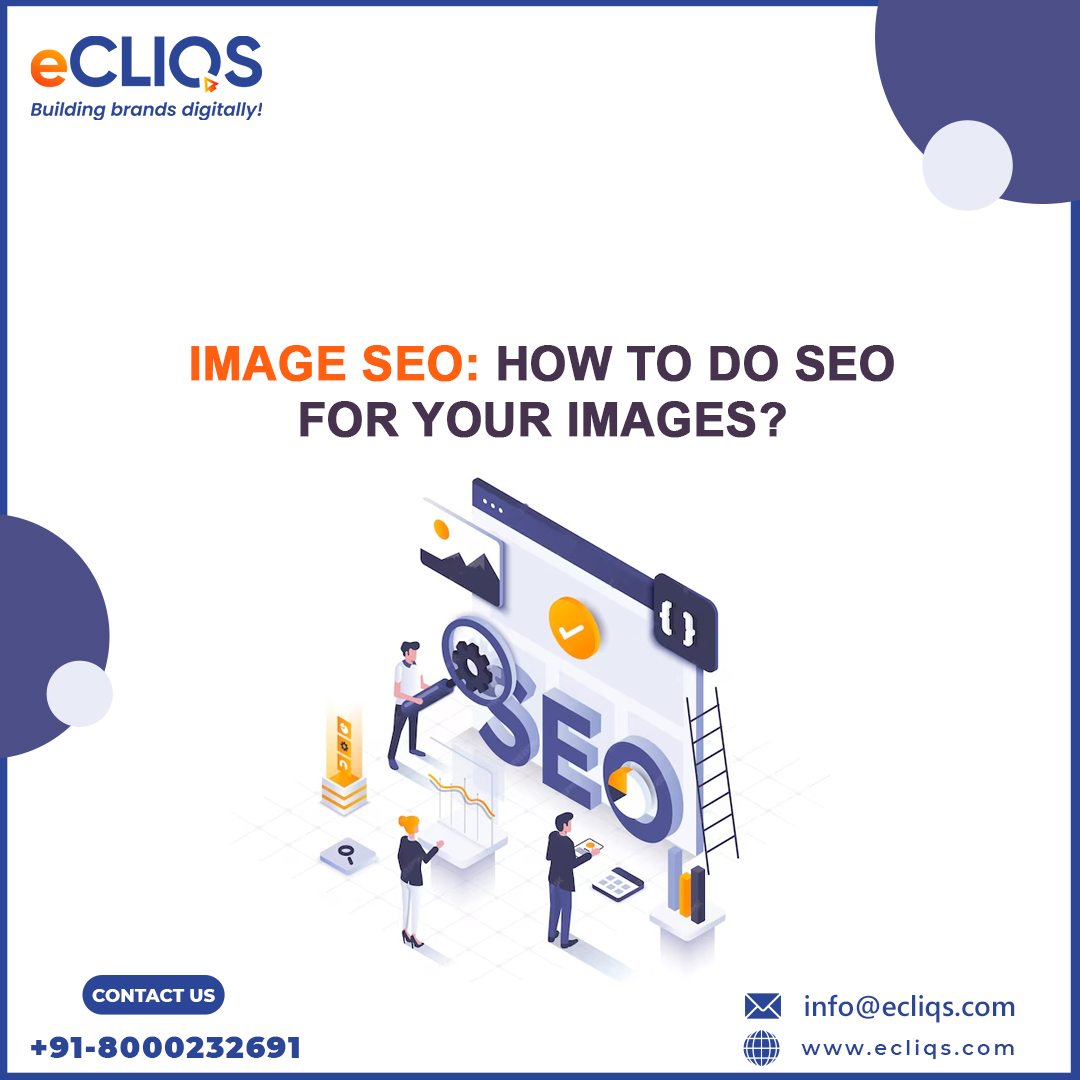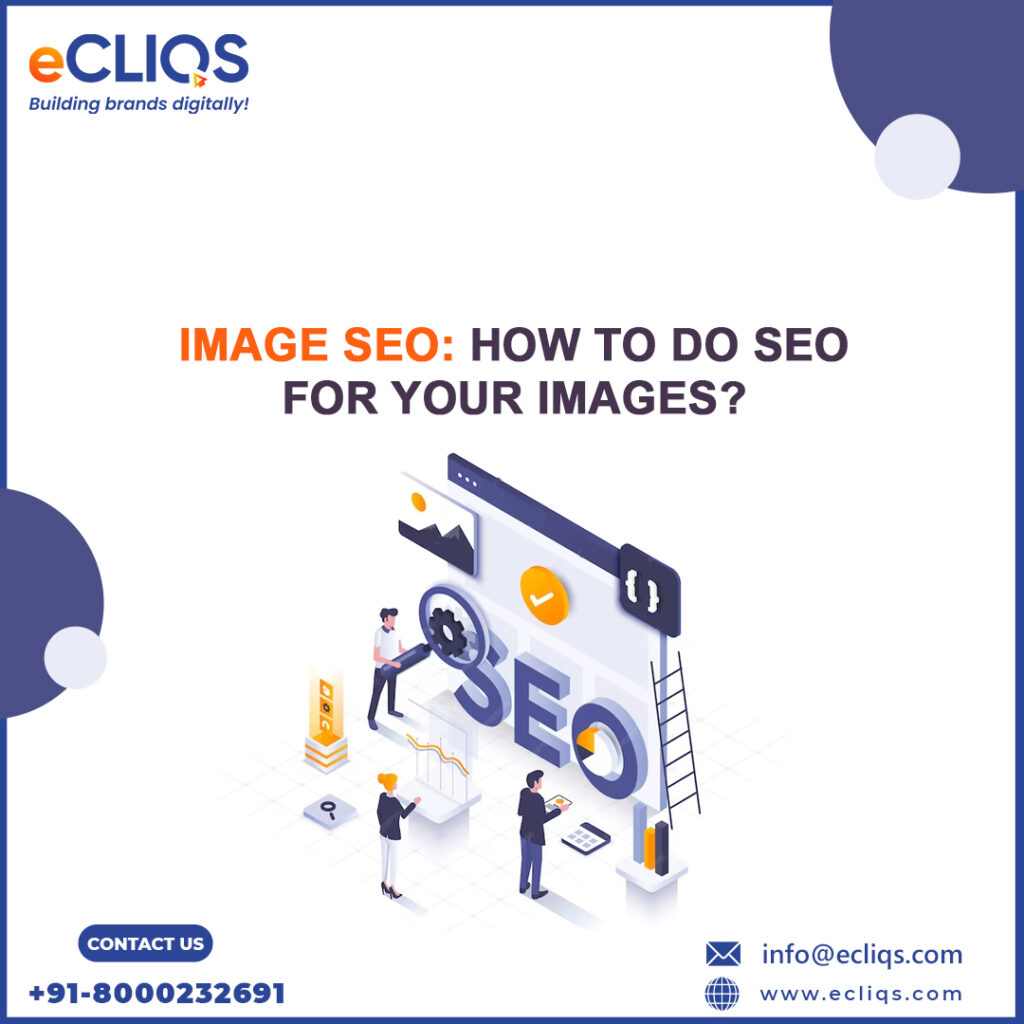
SEO, or search engine optimization, may appear sophisticated, but at a basic level, you may think of it this way: Everything on the internet is either content or a link (to other material).
Historically, the pieces of material with the most inbound connections from the highest-quality sites have had the best chance of ranking in search engines. That is the foundational premise upon which Google was formed.
“Off-page” SEO refers to the quality and number of a page’s inbound links. However, there are many other on-page SEO aspects to consider, such as image SEO. And it is the focus of our article today. Keep reading till the end to get a thorough understanding of what is Image SEO and other important things.

What is Image SEO?
Image SEO is the process of optimizing photos on your website so that search engines can easily “read” and find them, hence increasing your content’s visibility and rankings in Google and other search engines. Image SEO involves factors such as picture kind, size, and load time, as well as how you use and optimize alt text and keywords in image file names.
Image SEO is one of the most commonly disregarded aspects of on-page SEO, but it doesn’t mean it isn’t crucial. If you’re not careful, poor image SEO can significantly reduce your page’s capacity to collect links, rise in the index, and, eventually, deliver vital organic traffic.
The good news is that you can make a significant impact on your image SEO with just a few steps:
- Use a compressor to reduce image sizes
- Serve images in recommended, next-gen formats
- Scale your images to work with your website
- Create original, linkable image assets
- Optimize your image titles, captions, and alt text
- Make your images shareable
- Try lazy loading for images
Now, let’s go over these in further detail. Here are our top seven must-follow picture SEO recommendations to ensure that your images are adequately optimized for search.
1. Use a compressor to compress image sizes:
Site speed has the greatest influence of image SEO on a page’s overall ability to rank and generate traffic. It’s huge—site speed not only affects a user’s ability to navigate your conversion path, but it’s also an active ranking element. Google will not look favorably on slow pages. This is where image compression comes in. You may or may not be aware of PageSpeed Insights. It is quite convenient. Enter any URL from your website, and Google will provide you with a detailed assessment of the aspects that are slowing down that page’s speed. Run a couple of these tests, and you’ll discover a pattern. Improperly sized graphics are frequently the primary cause of page slowness. Because image SEO and page speed are intricately related, picture compression is an essential component of image SEO.
Simply, expand the appropriate tab in your PageSpeed Insights reports to view the images that are the most frequent offenders on your website. You will also see how much space you may save by compressing them.
2. Upload images in next-gen formats:
Another common advice that will appear in your PageSpeed Insights report is “Serve images in next-gen formats.” The formats discussed here are JPEG 2000, JPG XR, and WebP. If you’ve never heard of any of these, don’t feel left out—they’re not as common as JPG or PNG. While JPG and PNG remain the most popular picture formats, next-generation formats such as JPEG 2000 are superior. Encoding your photographs in these formats rather than older formats allows for faster load times and less data usage on mobile devices. If you wish to start offering photos in next-generation formats, there are many free web converters available.
3. Scale images to work with your website:
Proper picture size (and we’re talking dimensions, not file size) will vary based on your CMS and the format of the page where you’re uploading the image. Before submitting your images, look out for dimension best practices for your CMS. For example, Shopify suggests 2048 x 2048 pixels for square product photos. An image that seems to blend well with your text might have been automatically resized by your CMS to fit. This resize corrects the dimensions for display; it does not lower file size. In general, photos with more pixels will have larger file sizes. That implies that the best approach to ensure that you’re using the proper image sizes is to determine your site’s optimal image size and then crop photographs before uploading them. If that sounds like a time-consuming process, it may be if you’re sourcing photographs from many websites. However, whether you’re downloading stock photographs or outsourcing product images to a designer, you’ll want to discover a standard size that’s appropriate for your website.
4. Create original image content:
Stock photographs are simple to resize—the majority of the images you get from Adobe Stock, Shutterstock, or other sellers will come in sizes that are suitable for most websites. However, stock photographs aren’t always as effective as original, branded content. On the other hand, curated graphs based on in-house data or high-quality photographs of your product in action are the types of images that are shared on social media and found through reverse image searches.
Most essential, unique, captivating photos are required to make your page distinctive and valuable to the user. When Google experts are asked for a prescription for good SEO or a response to a specific tweak in Google’s algorithm that has resulted in a decline in ranks, they consistently answer the same thing: create pages that are above all beneficial to your audience. That includes selecting photos to provide users with the best experience possible on your pages.
5. Use titles, captions, and alt text liberally:
When deciding which image to return for an image query, Google has little information. At the very least, it has less information available than when indexing entire pages. For image SEO, you must provide Google with as much information about your image as possible within the space allowed to you. There are three main areas to do this:
Alt text:
Alt text improves the user experience for screen readers or if your server fails to load the image. However, alt text is the primary mechanism by which Google recognizes what your image is, therefore it is important in terms of ranking. As a best practice, include the page’s goal keyword and any ancillary keywords that may relate to a single image, and omit anything that is not descriptive (articles, etc.).
Titles:
There has been significant controversy about whether picture titles are required in addition to alt text. However, they are ranking factors in the sense that Google uses them to determine the order in which photographs appear in image searches.
Captions:
This is what Google says about captions. “Google extracts information about the subject matter of the image from the content of the page, including captions and image titles.” So, essentially, putting your image near relevant text will help Google figure out what it is. Using captions is a foolproof approach to ensure that your image is presented appropriately and in context.
6. Ensure Seamless Social Sharing:
Let’s discuss Open Graph tags and/or Twitter Cards. These are HTML tags that ensure that when a page is shared on Facebook or Twitter, photos and description snippets are correctly displayed. Naturally, this is extremely important if you want your photographs to get traction on social media and drive traffic and strong social signals back to your website. If you are unsure whether certain elements exist in your source code, you can search for them. You may also try fake posting your page on Twitter or Facebook to ensure that the post displays correctly. Again, your CMS will determine how you implement Open Graph tags. If you use BigCommerce, for example, you’ll see open graph fields in all of your product listings on the back end (but not on your home page). If you use WordPress, you can locate these fields in Yoast (a fantastic SEO plugin for WordPress). It’s a good idea to look through your most trafficked and business-critical pages and ensure they’re all equally shareable on social.
7. Lazy Loading:
Aside from having a catchy name, lazy loading can help improve page speed by avoiding loading images below the fold until the user scrolls down to them. Take it from Google. Lazy loading can substantially speed up loading on large pages with many images below the fold by loading them only when needed or after the major content has finished loading and rendering. That’s about as positive an endorsement as you can get.
Google also supports lazy loading in its own PageSpeed Insights. You may come across this advice while performing page speed analysis on your website.
That is Google advising you that, in this case, sluggish loading can be beneficial. If you use WordPress, there are a few lazy-loading plugins worth looking at.
Final Words:
We’ve given you seven simple picture SEO action items to implement on your website. Keep in mind that you do not have to use all of these, but you should try to employ as many of them as possible given the time and experience you have. For example, you may be uncomfortable with hard-coding Open Graph tags, but anyone can add search-friendly alt text or utilize a free application to compress photos efficiently. Decide what is most critical and possible for your approach, and proceed from there!


